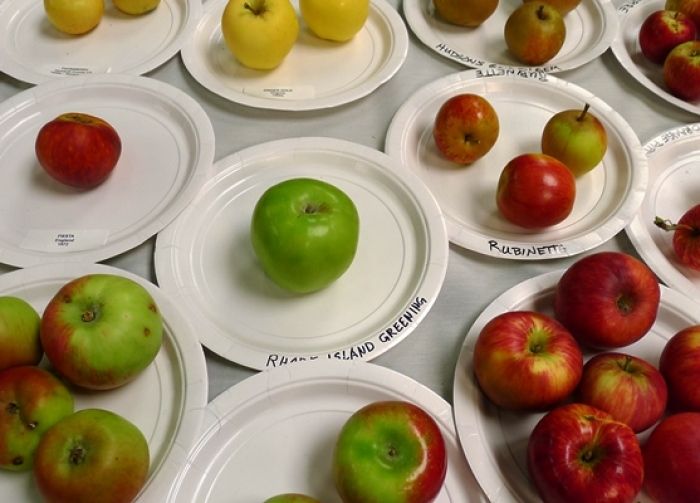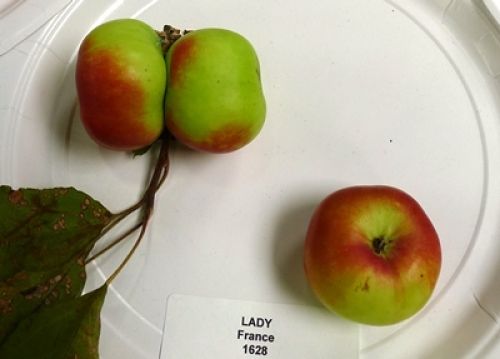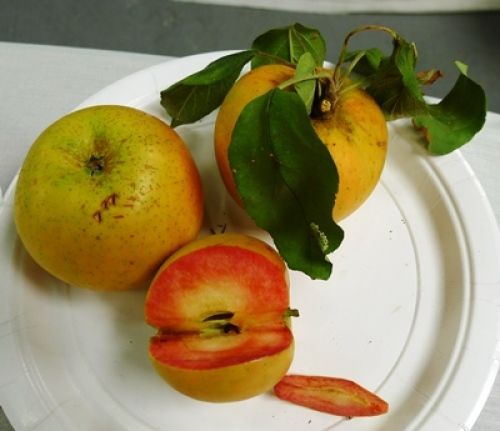
Have you heard the old saying about apple seeds? You can count the number of seeds in an apple, but you can’t count the number of apples in each seed.
No one epitomizes that idea more than John Chapman, the man who would become the folk hero called Johnny Appleseed. The legend of Johnny Appleseed is one we all seem to know, whether from the animated Disney short musical film or from one of the many illustrated children’s books about him.
Some of the legend is true; most is not as I discovered reading the well-researched book called Johnny Appleseed and The American Orchard: a cultural history by William Kerrigan (The Johns Hopkins University Press, 2012).
Kerrigan, a college professor, spent 10 years researching, traveling and writing his book. He used historical records, census data, deeds, IOUs and estate papers to trace the life of John Chapman. It’s a fascinating history of a life fully lived versus the caricature of a barefoot man who scattered apple seeds across the countryside.
This 245th anniversary of his birth is a good time to recognize the man instead of the myth that grew around him after he died. To begin with, he wasn’t crazy and didn’t wear a kitchen pot for a hat. He also wasn’t a Yankee saint or a “magical Santa Claus.” He wasn’t lazy or a hermit.
He was a complicated man who stayed true to his principles during all of his 71 years.
John Chapman was a product of his time and Puritan upbringing. He was born on September 26, 1774, in Leominster, Mass., and grew up during the American Revolution. He left home in his teens to start his travels that took him west through Pennsylvania, Ohio, Indiana and Illinois.
Apples were an especially important crop for settlers to the region because they provided food, cider and animal feed. Chapman began planting apple trees from the seeds he found in the discarded apple pulp behind cider mills.
The free seeds allowed him to sell his trees for 3-5 cents each or to give them away to poor farmers who needed help. In addition to being cheaper than grafted trees, trees that grew from seeds were better adapted to the climate and had improved hardiness.
But there was a distinct difference between those who planted seedling trees and those who could afford grafted trees.
“In the early 19th century, apples were an indicator of the class of pioneer to which a family belonged,” Kerrigan explains in his book.
Gentlemen farmers planted perfect apple orchards with 25 cent grafted trees. That meant they were industrious and forward-thinking. Farmers who planted trees from John Chapman’s seedlings were thought to be poor, idle and unambitious.
But John Chapman was quite industrious. He planted his apple seeds in rough tree nurseries on unwanted land near small tributaries and creeks. Some of the plantings were on land he didn’t own and many trees didn’t survive. But he sold what he could to white settlers who couldn’t afford grafted trees.
The Johnny Appleseed myth promotes the idea he was the only one planting apple trees, but there were other apple tree growers. Indians in the area grew apple orchards, too, before they were forced from their land.
Chapman was frugal, wore castoff clothes, slept outside and had a gentle nature. His eccentricities helped fuel the stories people told about him long after his death in 1845. He may have preferred to live alone, but he had a large family that included a sister and a number of half-siblings that he was connected to throughout his life.
By selling trees and working odd jobs for others, he was able to save his money and eventually invest in several hundred acres of his own land. He never stopped planting seedling trees.
In his book, Kerrigan makes it clear the real Johnny Appleseed used “primitivism as a show of piety” not insanity. Chapman was well-read, somewhat social, and had religious leanings he tried to share with others.
While the author paints a colorful portrait of John Chapman’s life, he deftly weaves in the evolution of the American apple industry from the 1800s to the 2000s.
In the years after Chapman’s death, the apple industry changed dramatically. Small orchards began to disappear and large industrial-sized orchards took over. Consumers eventually had fewer apple choices and the apples that were left lost their appeal.
Fortunately, the apple has come full circle. Even though hundreds of apple varieties were lost over time, many of the antique apple varieties are growing again. Horticulturists, fruit experts, backyard gardeners and many a modern-day Johnny (and Jane) Appleseed are preserving heirloom apples for the future. John Chapman would be proud.




















Comments
Log in or create an account to post a comment.
Sign up Log in